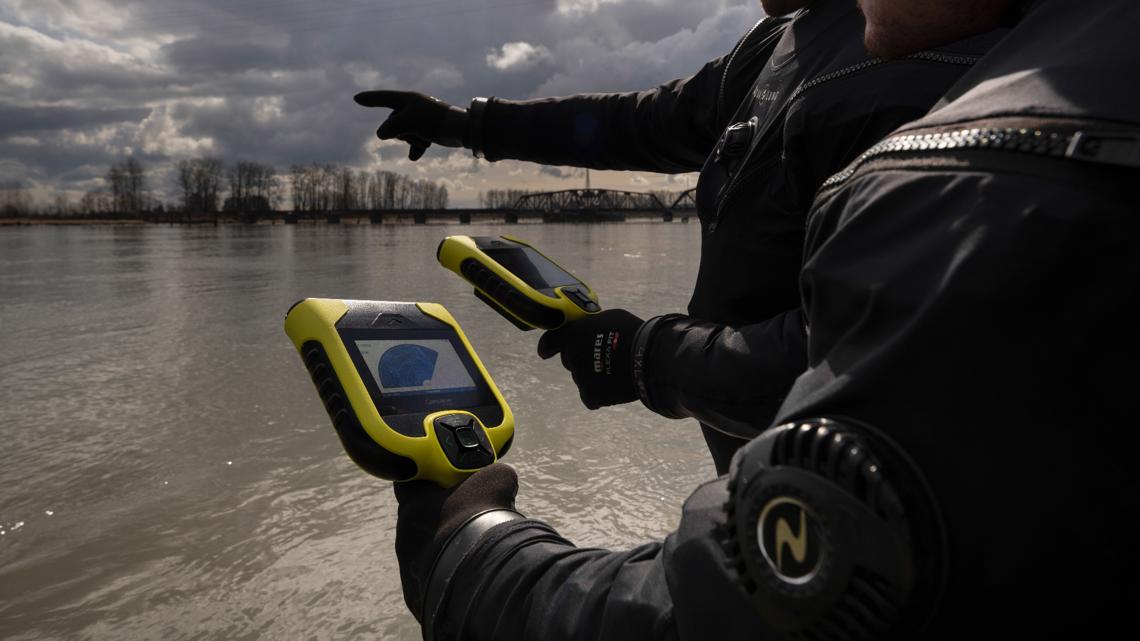
The handheld device is being described as a game changer in search operations.
KERR COUNTY, Texas — Visibility is one of the challenges faces by divers as search efforts continue at the Guadalupe River in Kerr County.
Now a device is being used by searchers, which creators say could drastically reduce search sizes and speed up recoveries.
Carolyn Loncaric, founder and CEO of AquaEye says some are calling the handheld device a game changer in search operations.
The AquaEye device is currently being used in recovery operations in Kerr County.
“It will scan the area of a football field in a minute and pinpoint the location of a victim,” said Loncaric.
Loncaric says she created the device back in 2020 to help lifeguards and camps locate drowning victims.
“As soon as we started trying to sell it and talk to people, I realized that the need was much greater than I had ever believed,” said Loncaric.
The handheld sonar device works similar to a radar gun. You put it under water, pull the trigger and scan.
“It sends out sound pulses just like any sonar device does. When the echoes return, it analyzes them and uses AI to try to figure out, ‘Okay which objects have a high likelihood of being a human being?’” said Loncaric.
Loncaric says it’s not a magic wand and it’s not 100% perfect.
“But it can drastically reduce search sizes, so teams often report back side-by-side comparisons 80-90% reduction in search times,” said Loncaric.
The device is now used by firefighters, police, navies and search and rescue teams.
Loncaric says with the simplicity of the device, you can start a search in seconds versus the time it takes getting a boat, crew and equipment in the water.
“What’s happening, this thing can be in the water immediately and pinpointing locations that you want to check out,” said Loncaric.
Search volunteer, Courtney Adair says visibility in the river is about as bad as it gets.
“You have about 6 inch visibility, which makes searching almost impossible,” said Adair.
The search team Adair is on has just gotten the approval for the use of an AquaEye device.
He says with next to no visibility, you can’t rely on your own eyes to search.
“AquaEye kind of breaks down that barrier. It extends that search area, that radius to better detect soft tissue, that were looking to recover and investigate,” said Adair.
Loncaric says there are currently four teams using the devices, some on loan. Soon there will be 5.
She says They are a small company, just trying to do what they can to help.
“We’re fundraising. We’re not some massive corporation that could donate 100 of these units, which we’d love to do,” said Loncaric. “We need to help by funding ourselves as well at the same time. If anybody out there who hears your show is looking to help a company, who’s trying to help others, we are all ears and open to meeting.”
If you would like to learn more about the company, you can click here.
